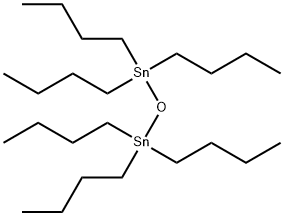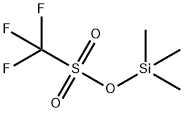THIOPHOSPHORYL CHLORIDE
Synonym(s):Phosphorus sulfochloride;Phosphorus thiochloride
- CAS NO.:3982-91-0
- Empirical Formula: Cl3PS
- Molecular Weight: 169.4
- MDL number: MFCD00011504
- EINECS: 223-622-6
- SAFETY DATA SHEET (SDS)
- Update Date: 2025-09-25 17:15:13

What is THIOPHOSPHORYL CHLORIDE?
Chemical properties
clear colourless to slightly yellowish liquid
The Uses of THIOPHOSPHORYL CHLORIDE
Thiophosphoryl chloride was used in the synthesis of O-ethyl dichlorothiophosphate.
What are the applications of Application
Thiophosphoryl chloride is a starting material for O-ethyl dichlorothiophosphate synthesis
General Description
A colorless fuming liquid. Boiling point 257°F (125 °C). Irritates the eyes and mucous membranes. Corrosive to metals and tissue.
Air & Water Reactions
Fumes in air. Decomposes in water to form phosphoric acid and hydrochloric acid (hydrogen chloride). Both substances are corrosive to metal or tissue. Can also form hydrogen sulfide (H2S), a toxic flammable gas, in reaction with water [AAR 1991].
Reactivity Profile
THIOPHOSPHORYL CHLORIDE is acidic. Incompatible with bases (including amines), with strong oxidizing agents, and with alcohols. May react vigorously or explosively if mixed with diisopropyl ether or other ethers in the presence of trace amounts of metal salts [J. Haz. Mat., 1981, 4, 291].
Hazard
Strong irritant to skin and tissue.
Health Hazard
TOXIC; inhalation, ingestion or contact (skin, eyes) with vapors, dusts or substance may cause severe injury, burns or death. Reaction with water or moist air will release toxic, corrosive or flammable gases. Reaction with water may generate much heat that will increase the concentration of fumes in the air. Fire will produce irritating, corrosive and/or toxic gases. Runoff from fire control or dilution water may be corrosive and/or toxic and cause pollution.
Fire Hazard
Non-combustible, substance itself does not burn but may decompose upon heating to produce corrosive and/or toxic fumes. Vapors may accumulate in confined areas (basement, tanks, hopper/tank cars etc.). Substance will react with water (some violently), releasing corrosive and/or toxic gases and runoff. Contact with metals may evolve flammable hydrogen gas. Containers may explode when heated or if contaminated with water.
Safety Profile
Poison by inhalation. Moderately toxic by ingestion. A corrosive irritant to skin, eyes, and mucous membranes. Explosive reaction with methylmagnesium iodlde. Explosive reaction with pentaerythritol + heat. Reacts with water or steam to produce toxic and corrosive fumes. When heated to decomposition it emits highly toxic fumes of POx, SOx, and Cl-.
Purification Methods
Possible impurities are PCl5, H3PO4, HCl and AlCl3. Gently mix it with H2O to avoid a heavy emulsion; the product decoulorises immediately and settles to the bottom layer. It is soluble in *C6H6 and CCl4. [Duval Inorg Synth IV 73 1953.] HARMFUL VAPOURS.
Properties of THIOPHOSPHORYL CHLORIDE
| Melting point: | -35 °C (lit.) |
| Boiling point: | 125 °C (lit.) |
| Density | 1.668 g/mL at 25 °C (lit.) |
| vapor pressure | 21.9hPa at 25℃ |
| refractive index | n |
| solubility | benzene: soluble(lit.) |
| form | liquid |
| color | colorless |
| Specific Gravity | 1.668 |
| Water Solubility | hydrolyzes in H2O, forming H3PO4, HCl, H2S; hydrolyzes rapidly in alkaline solutions; soluble benzene, CCl4, CS2, chloroform [MER06] |
| Sensitive | moisture sensitive |
| Merck | 14,7356 |
| Dielectric constant | 2.5(25℃) |
| Stability: | Moisture Sensitive |
| CAS DataBase Reference | 3982-91-0(CAS DataBase Reference) |
| EPA Substance Registry System | Phosphorothioic trichloride (3982-91-0) |
Safety information for THIOPHOSPHORYL CHLORIDE
| Signal word | Danger |
| Pictogram(s) |
 Corrosion Corrosives GHS05  Skull and Crossbones Acute Toxicity GHS06 |
| GHS Hazard Statements |
H302:Acute toxicity,oral H314:Skin corrosion/irritation H330:Acute toxicity,inhalation H335:Specific target organ toxicity, single exposure;Respiratory tract irritation |
| Precautionary Statement Codes |
P260:Do not breathe dust/fume/gas/mist/vapours/spray. P280:Wear protective gloves/protective clothing/eye protection/face protection. P301+P312:IF SWALLOWED: call a POISON CENTER or doctor/physician IF you feel unwell. P303+P361+P353:IF ON SKIN (or hair): Remove/Take off Immediately all contaminated clothing. Rinse SKIN with water/shower. P305+P351+P338:IF IN EYES: Rinse cautiously with water for several minutes. Remove contact lenses, if present and easy to do. Continuerinsing. |
Computed Descriptors for THIOPHOSPHORYL CHLORIDE
THIOPHOSPHORYL CHLORIDE manufacturer
New Products
4,4-Difluoropiperidine hydrochloride tert-butyl 9-methoxy-3-azaspiro[5.5]undecane-3-carboxylate Indole Methyl Resin N-Isopropylurea N,N-Dicyclohexylcarbodiimide(DCC) MELDRUMS ACID 5-METHYLISOXAZOLE-4-CARBOXYLIC ACID Magnessium Bis glycinate Zinc ascorbate 1-bromo-2-butyne 2-acetamidophenol 9(10H)-anthracenone Erythrosin B, 4-Piperidinopiperidine 2-((4-morpholinophenylamino) (methylthio) methylene) malononitrile 2,4-dihydroxybenzaldehyde 3-(4-morpholinophenylamino)-5-amino-1H-pyrazole-4-carbonitrile Methyl 2-methylquinoline-6-carboxylate 2,6-dichloro-4-nitropyridine 4-Bromo-2-chlorobenzonitrile 2-(benzylamino)acetic acid hydrochloride 4-(tert-Butoxycarbonylamino)but- 2-ynoic acid 3,4-dihydro-2H-benzo[b][1,4]dioxepine 1-Phenyl-1-cycloprppanecarboxylicacidRelated products of tetrahydrofuran








You may like
-
 Thiophosphoryl chloride CAS 3982-91-0View Details
Thiophosphoryl chloride CAS 3982-91-0View Details
3982-91-0 -
 3-(4-amino-1-oxoisoindolin-2-yl)-1-methylpiperidine-2,6-dione 98%View Details
3-(4-amino-1-oxoisoindolin-2-yl)-1-methylpiperidine-2,6-dione 98%View Details -
 614-19-7 98%View Details
614-19-7 98%View Details
614-19-7 -
 3112-85-4 Methyl phenyl sulfone 98%View Details
3112-85-4 Methyl phenyl sulfone 98%View Details
3112-85-4 -
 20677-73-0 (2,2-diethoxyethyl)methylamine 98%View Details
20677-73-0 (2,2-diethoxyethyl)methylamine 98%View Details
20677-73-0 -
 3-(4-(hydroxyamino)-1-oxoisoindolin-2-yl)piperidine-2,6-dione 98%View Details
3-(4-(hydroxyamino)-1-oxoisoindolin-2-yl)piperidine-2,6-dione 98%View Details -
 57381-49-4 2-bromo-4-chlorobenzonitrile 98%View Details
57381-49-4 2-bromo-4-chlorobenzonitrile 98%View Details
57381-49-4 -
 4,6-dichloropyrimidine-5-carbaldehyde 98%View Details
4,6-dichloropyrimidine-5-carbaldehyde 98%View Details
5305-40-8
